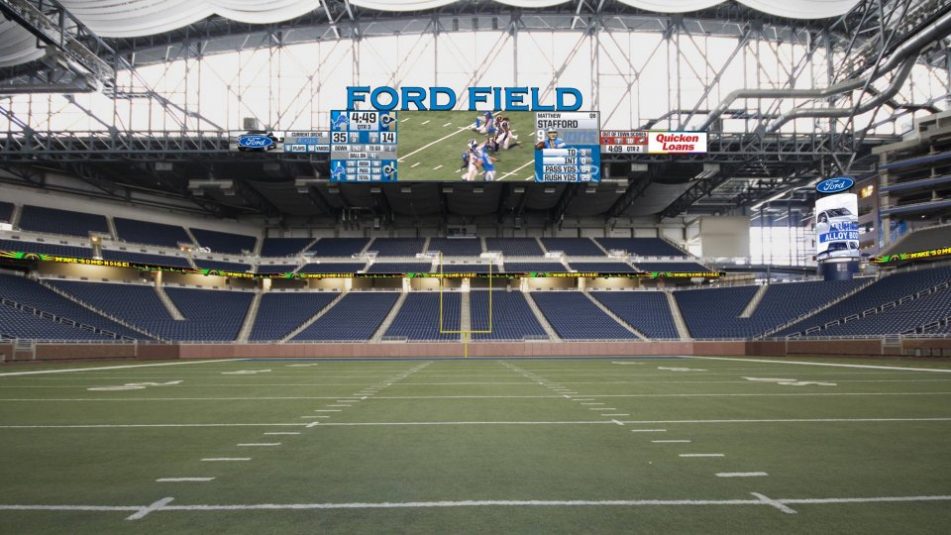Big Screens Increasingly Figure in Field Strategies
Videoboards can help ball carriers evade the defense, coaches challenge calls
Story Highlights
Last week’s New York Times revealed a little-noticed but increasingly significant effect in which stadium videoboards are beginning to affect tactics on the field. In the article, one runner in a 400-meter hurdles at the recent world track and field championships used the large video screen at each end of London Stadium to check her position relative to other runners. That kind of situational awareness, which during a race might have required diverting a small but possibly crucial bit of energy to craning a neck to see behind, is now available to runners and other athletes in HD and practically in real time right in front of their faces. With the help of the video, that little bit of energy might instead be applied to gaining a critical step or two in a race.

The Detroit Lions asked that a renovation place the play-countdown clock in the quarterback’s field of vision.
“In-stadium video is becoming part of the strategy for sports now,” says Will Ellerbruch, national sales manager at Daktronics, which installed the London Stadium screens. He says he has noticed NFL ball carriers using stadium screens to check on the positions of pursuers and changing their speed and direction as they try to elude them.
No professional teams have brought up the positioning of screens in venues with this kind of tactical thinking in mind, at least not yet, he adds. “The screens keep getting bigger and bigger, so they don’t really have to position them: they’re so big you can see everything from everywhere on the field.”
What has been happening, however, is that practice facilities are asking for screens to be positioned so that players and coaches can watch themselves in action in real time. In addition, they’ve been asking for ways to call up replays more quickly. Such considerations could affect purchasing decisions: for instance, the circular Halo central video screen in the new Mercedes-Benz Stadium in Atlanta has a Daktronics display but uses a Ross video processor, and the interface between them could result in a very, very slight delay due to processing time.
That may not make any difference to a running back, but the latency between real life and screen would be magnified in events where time is measured in thousandths of a second, such as sprint races. Ellerbruch estimates the latency of large-screen HD video at a maximum of one frame, which is 0.01666 seconds at 60 fps. As the Times article puts it, “there is simply not enough time for screen time in a 100-meter final, and even less in the sprint hurdles, where there are obstacles to clear every few strides.”
Ellerbruch says it’s likely that more control over video viewing and replay recall from the field will make itself felt in managerial decisions about whether to challenge officiating calls, as well as in other ways. For instance, as part of the video renovation this year at Ford Field, the NFL Lions’ home in Detroit, the team’s quarterbacks were involved in repositioning the delay-of-game countdown displays, which could give the home team an extra precious second or two by keeping it in the QB’s field of vision as it ticks down.
As with sound systems, some of which were accused of being virtually weaponized a decade ago to obscure opposing team cadences until the NFL cracked down on the practice, video screens are increasingly becoming part of the tactics and strategies on the field, even as they continue to give fans in the stands a reason to get off the couch and come to the game.
